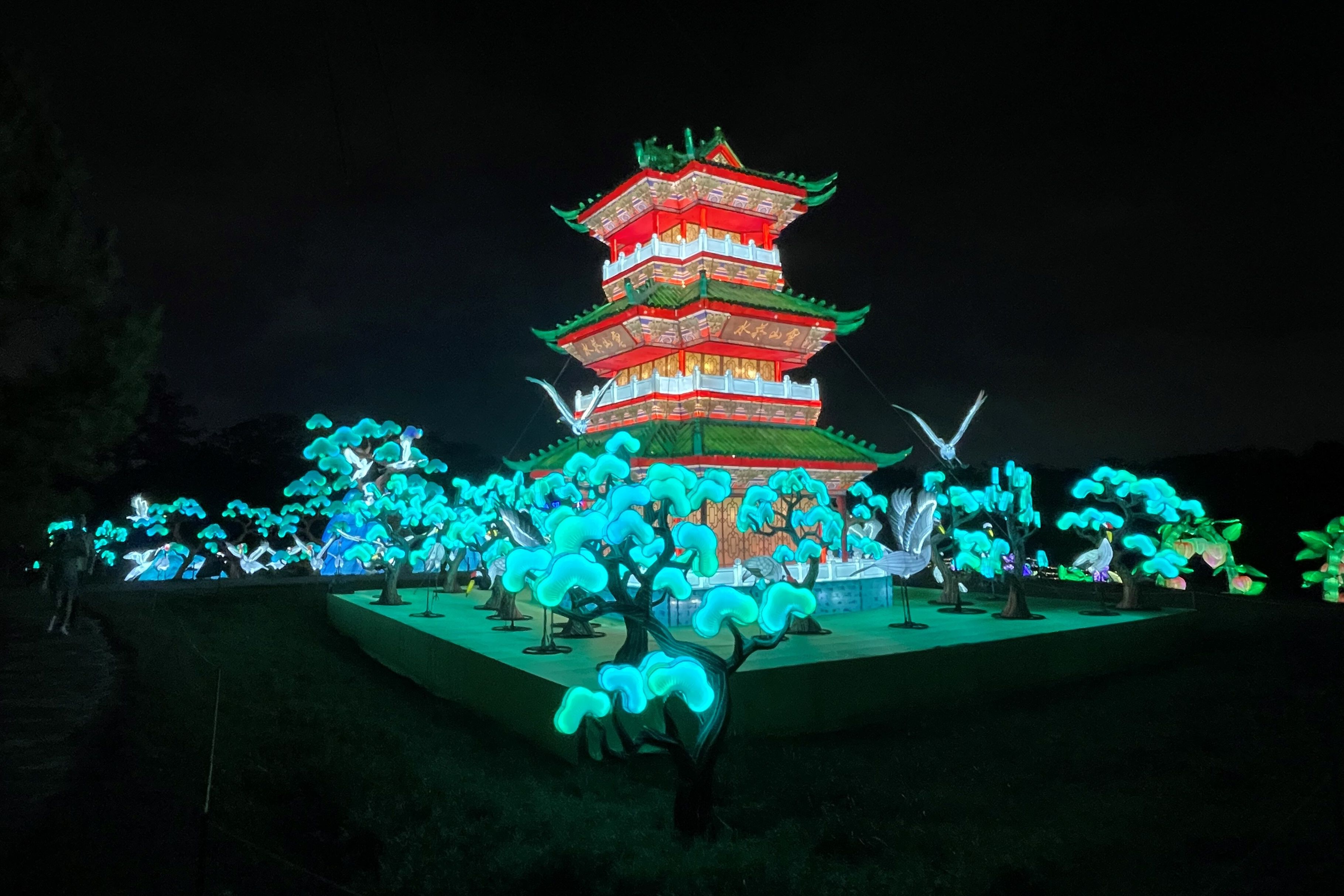Sparkling Wine: Cocktail Triple Threat?

Image: Shutterstock
Among life’s truths is this oldie-but-goodie: Champagne makes the party. If you weren’t already celebrating to begin with, you will be as soon as someone breaks out a bottle of liquid effervescence and a few slim, elegant flutes. The adage goes double for bubbly-based cocktails, something humanity had divined at least by 1862, when the first known recipe for the Champagne Cocktail—a timeless creation that pairs the beverage with bitters and sugar—was featured in the classic bartenders’ tome How to Mix Drinks.
In addition to Champagne, other sparkling wines, such as cava and prosecco, make the perfect base for all sorts of fizzy cocktails. Steven Salazar, general manager of Wooster’s Garden, the refined cocktail haunt in Midtown, has made drinks with pretty much every bubbly base you can think of. He calls sparkling wine a triple threat: “You get sugar, acid and texture from the bubbles,” he says. “That adds a really great foundation for the drink.”
For a less pricy Champagne Cocktail, Salazar suggests using a Crémant de Loire sparkling wine made with chenin blanc grapes. If you’d rather choose a bottle yourself, he says to taste a few if you can and to look for what he calls staying power. “The one that lingers on your palate the longest, while still having well-balanced sugar and acid, is the one you should go for,” he says. Whatever you pick, rest assured: there’s no sight more festive on New Year’s Eve than a sugar cube madly erupting bubbles inside your glass.
Champagne Cocktail
- 3 dashes angostura bitters
- 1 sugar cube
- 4 oz. sparkling wine or Champagne
Soak a sugar cube with a few dashes of angostura bitters, and drop it in the bottom of a champagne flute. Top with sparkling wine. Optional: garnish with a strip of lemon peel.
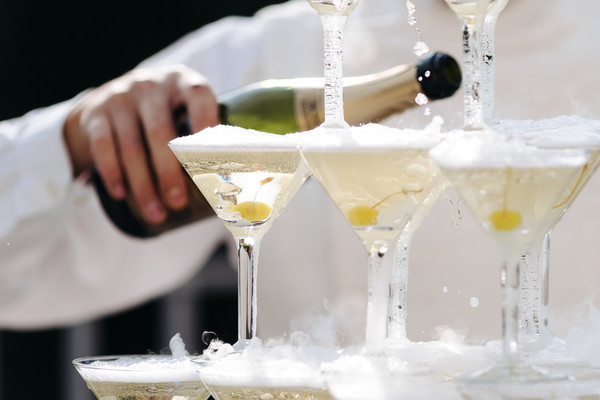
Champagne cocktails: far less messy than Champagne towers.
Image: Shutterstock
Five More Champagne Cocktails to Try
We asked some of the city's top spirits specialists for their favorite recipes involving Champagne and sparkling wine. You're going to want to hit Spec's and/or Houston Wine Merchant for these speciality offerings, but the oohs and ahhs when you serve these dazzling drinks will make it all worthwhile.

Steven Salazar of Wooster's Garden
Steven Salazar
Wooster’s Garden
“If you want a really cool recipe, I happen to think we have a pretty amazing kind of fall/winter cocktail. It’s kind of out of the box, too. It’s really intriguing, and it’s really beautiful. It’s called the Identity Crisis. It’s smoky and citrusy, it has these rich spices in there from the angostura, the clove and cinnamon. It’s intense, but it’s really well balanced and flavorful.”
Identity Crisis
- 1 oz. Mezcal Vida
- 3/4 oz. angostura bitters
- 3/4 oz. lemon
- 3/4 oz. agave syrup
Shake the mezcal, angostura, lemon and agave syrup over ice until it’s ice cold, then strain it into a champagne glass and top with sparkling wine (Salazar recommends a Cremant de Loire). Garnish with a bit of woken-up mint (that's a mint sprig slapped sharply between the palms before using).
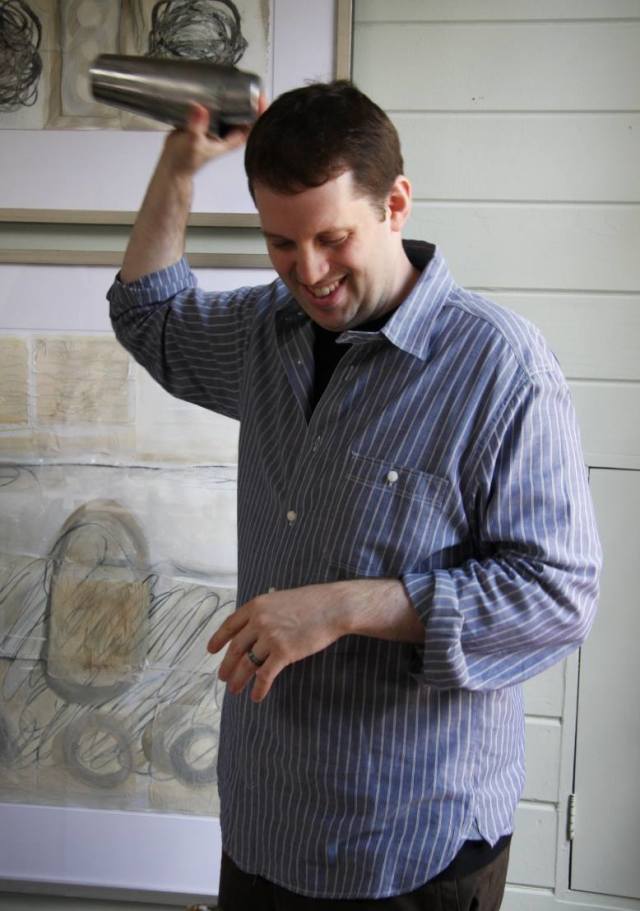
Sean Beck of Backstreet Cafe, Hugo's and Caracol
Sean Beck
Backstreet Café
“As a sommelier I taste a ton of sparkling wines. During that process is when a cocktail idea will jump out to me. It’s like when a director writes a part for a performer they loved seeing in someone else’s film. I will say aromatic spirits typically do best when combined with bubbly (Gin, Congac, Amaro, Pisco, Eau de Vie) as well as various forms of citrus, herbs and more delicate fruit. [The Violet Hour] is a drink I came up with for Tom Ford several years ago. I put it on the menu every year around November. They were launching his line of colognes/perfumes in Houston and wanted me to do a wine pairing. I suggested we do this to start off the night as it mixed fragrance, visual excitement and the sophistication he was known for as a designer/filmmaker.”
The Violet Hour
- 1/2 oz. Leblon cachaça
- 3/4 oz. Rathman creme de violette
- 3/4 oz lemon juice
- Splash of simple syrup
- 8 edible rose petals
- 1 pinch of dried lavender petals (sold in bulk bins at Central Market)
- 1 1/2 oz. Champagne grapes (can substitute 4 red seedless grapes, quartered)
- 2 1/2 oz. NV Champalou, Vouvray Brut or a Cremant de Loire
In a mixing tin, muddle the grapes and dried lavender. Be sure to rub the lavender between the fingers to release the flavor as you add the pinch. Add in cachaça, creme de violette, lemon, simple syrup and ice; shake well. Pour contents into a tall Collins glass along with edible flowers. Top with 2.5 oz. sparkling wine, then pour the drink back and forth between shaker and glass a few times, garnishing with a lemon wheel.
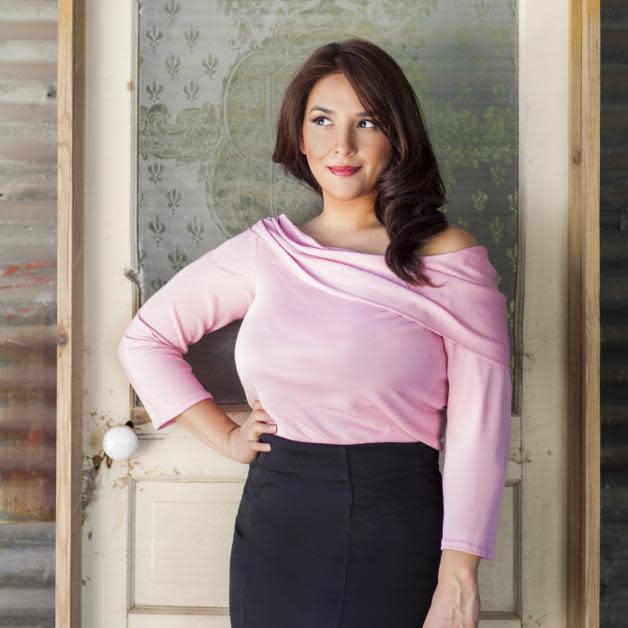
Alba Huerta of Julep
Image: Julie Soefer Photography
Alba Huerta
Julep
“When I use sparkling wines for cocktails, I no longer think of them as a finished product, which they are, but instead as an ingredient to a larger formula. It's an interesting perspective to take as both a wine and cocktail drinker, but each wine I use—from sparkling Gamay and DOCG Prosecco to Blanc de Blanc and Lambrusco—all have different qualities that can be applied to cocktails.” Here, Huerta offers a drink from Julep’s "Trading with the Enemy" menu, based around Blanc de Blanc.
Liquid Currency
- 1 1/2 oz. Blanc de Blancs sparkling wine
- 11/2 oz. rose liqueur
- 2 tsp. Pinot Noir verjus
- 2 dashes egg white
- 1/4 oz. rhubarb bitters (sold at Spec's)
Combine all ingredients but sparkling wine in a cocktail shaker and shake over ice until very cold. Strain into a champagne flute and top with sparkling wine.
As far as using expensive champagne in your cocktails, Huerta offers the following wisdom: “I believe in pampering yourself. If you can afford it, then why not? At the same time, once opened, the champagne starts to lose effervescence, so if you're going to make one cocktail with an expensive bottle of bubbly, you might as well throw a party and make many.” Given the fact that, if you’re opening champagne, you’re pretty much guaranteed a party, this sounds like pretty good advice.
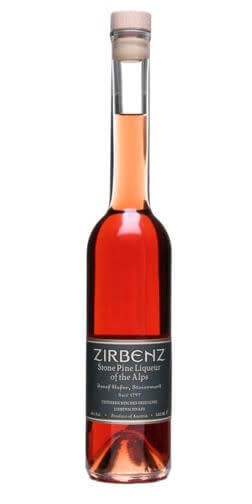
Zirbenz Stone Pine Liqueur of the high Alps of Austria
Nicholas L. Hall
My wife has been bugging me to use Zirbenz Stone Pine Liqueur in a cocktail, after falling love with the oddball a few winters back; its spicy, resinous notes recall the smell left on your hands after wrangling a Christmas tree. It’s an intriguing ingredient, put to good, simple use as a foil to the clean, crisp backdrop of sparkling wine, the gap bridged by a bit of cognac.
The Close and Holy Darkness
- 1/2 oz. cognac or good quality brandy
- 1 oz. Zirbenz Stone Pine Liqueur
- 1 dash each peach and orange bitters
- 4 oz. sparkling wine
Add cognac, liqueur and bitters to a champagne flute and top with sparkling wine.
For a lighter twist, use this recipe, inspired by Salazar's go-to ratio for sparkling wine cocktails:
The Same Uncles
- 1 oz brandy
- ¾ oz Zirbenz Stone Pine Liqueur of choice
- ½ oz lemon
Shake over ice, fine strain into a flute, and top with sparkling Cremant de Loire. For an extra punch of pine, float a barspoon of liqueur on the finished drink, and garnish with a spiral of lemon peel.



